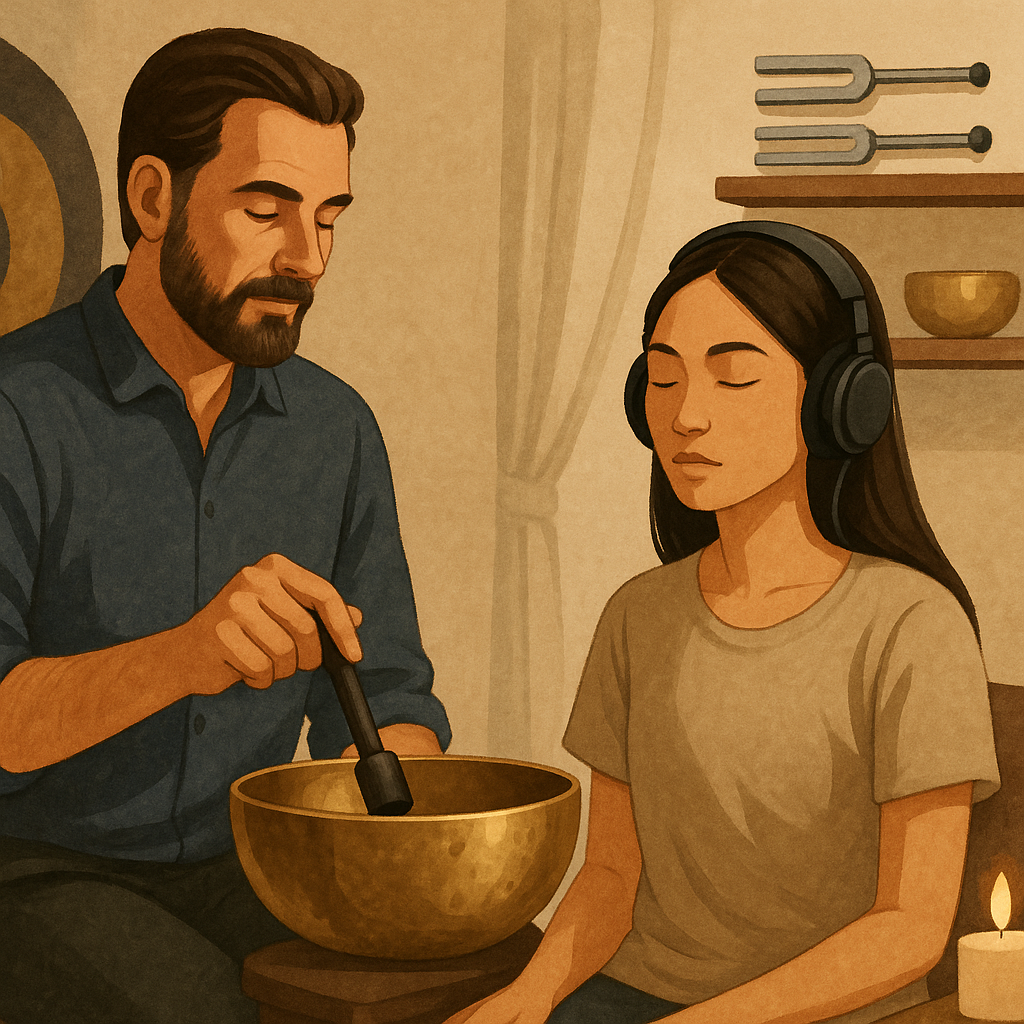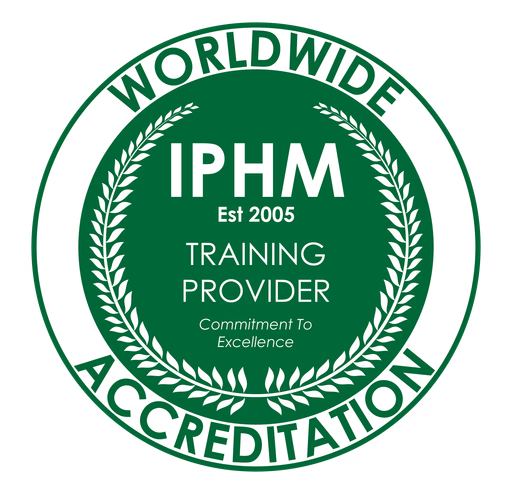
Introduction
Sound and vibration therapy is more than just hitting a gong or striking a tuning fork. It’s a holistic practice that combines ancient wisdom with modern science to support relaxation, healing, and transformation. For therapists, knowing the best practices ensures not only effective results but also a safe and professional experience for clients.
Understanding Sound and Vibration Therapy
The Science Behind Sound and Vibration
Everything in the universe vibrates, including our bodies. When frequencies are applied through sound or vibration, they can help restore balance. Studies show sound can influence brain waves, nervous system responses, and even cellular health.
Historical and Cultural Roots
Sound healing isn’t new it’s thousands of years old. Tibetan singing bowls, Native American drumming, and Gregorian chants all tap into the same principle: sound alters our state of being.
Types of Vibration
Vibration therapy comes in several forms, each offering unique benefits for the body. The most widely recognized is whole body vibration, where clients stand, sit, or lie on a vibrating platform. As the machine vibrates, it transmits energy throughout the body, prompting muscles to contract and relax rapidly. This type of body vibration exercise is designed to improve muscle strength, enhance balance, and support bone density.
Low intensity vibration is another approach, using smaller, faster vibrations that are less forceful but still effective for stimulating muscles and bone tissue. The choice between whole body vibration and low intensity vibration often depends on individual goals and physical condition. For example, high intensity resistance training with higher frequency vibrations (typically 30-50 Hz) is often used to target muscle strength, while lower frequencies (1-3 Hz) are more commonly applied for bone health.
Different frequencies and amplitudes can be tailored to address specific needs, whether the goal is to improve muscle strength, support bone density, or enhance overall physical function. Because each body responds differently to vibration, it’s essential to consult a healthcare professional before starting any vibration therapy program. This ensures the chosen method and intensity are safe and effective for your unique needs, helping you get the most out of every session.
Common Tools and Techniques
From crystal singing bowls to vibroacoustic chairs, therapists today have a wide toolkit. A sound bath is a form of sound therapy where participants are immersed in deep sound vibrations, which are believed to interact with the body’s energy centers to provide relaxation, pain relief, and stress reduction. Sound baths involve this immersion in sound vibrations and are commonly used to promote relaxation and pain relief. The key is to use these instruments intentionally, not randomly, to create therapeutic resonance.
Essential Skills for Therapists
Active Listening and Empathy
Clients may not always express their needs verbally. A skilled therapist listens not just with their ears but with their intuition and empathy.
Intuition vs. Structured Approach
Some therapists follow strict protocols, while others work intuitively. The best practice? Balance both approaches—structure gives safety, intuition gives flow.
Communication and Feedback
Always explain what will happen in a session and invite feedback. This builds trust and ensures alignment with client comfort.
Preparing for a Session
Creating a Safe and Calming Environment
Lighting, room temperature, and scent all matter. A clutter-free, serene space amplifies the effects of sound.
Choosing the Right Instruments
Every instrument has its unique effect. Gongs can be intense, while chimes are gentle. Match the tool to the client’s needs.
Setting Clear Intentions with Clients
Before beginning, discuss the client’s goals stress relief, emotional release, or deep relaxation. Intention guides the energy.
Techniques and Modalities
Tuning Forks
Placed on the body or near energy centers, they deliver precise vibrations. Great for balancing specific points.
Singing Bowls and Gongs
Bowls create harmonic overtones that calm the nervous system. Gongs, powerful and expansive, can induce deep meditative states.
Vibroacoustic Beds and Chairs
Technology meets tradition here. Low-frequency vibrations delivered through a bed or chair provide a full-body reset.
Voice and Chanting
The human voice is the oldest healing instrument. Overtone singing, mantras, and humming can be profoundly therapeutic.
Whole Body Benefits
Whole body vibration therapy offers a range of positive effects for people of all ages, but especially for older adults. Regular whole body vibration training has been shown to improve muscle strength, increase bone mineral density, and enhance balance. Engaging in whole body vibration exercise can also boost blood flow, reduce muscle soreness after workouts, and support better overall physical function.
For those concerned about age-related loss of muscle mass and bone density, body vibration training provides a non-invasive way to help maintain strength and bone health. A systematic review of randomized controlled trials found that whole body vibration therapy can significantly improve muscle strength, balance, and bone density in older adults, making it a valuable addition to an exercise program aimed at healthy aging.
However, it’s important to recognize that vibration therapy isn’t suitable for everyone. Individuals with certain inherent risks such as open wounds, recent joint replacement, or other medical conditions should consult a healthcare professional before beginning body vibration exercise. Personalized guidance ensures that the benefits of whole body vibration are maximized while minimizing any potential adverse effects.
Professional Best Practices
Personal Energy Management
Therapists must protect and balance their own energy. Practices like meditation, grounding, or clearing help prevent burnout.
Maintaining Ethical Boundaries
Sound therapy can be intimate. Respecting client boundaries physical, emotional, and energetic is crucial.
Adapting Sessions to Client Needs
No two clients are the same. Modify duration, instruments, and intensity based on individual feedback.
Integrating Therapy with Other Healing Modalities
Sound therapy works beautifully alongside massage, reiki, yoga, or psychotherapy. Collaboration enhances outcomes.
Safety and Contraindications
When Sound Therapy Should Be Avoided
Not all clients are suitable for certain techniques. High-intensity gongs, for example, may overwhelm those with trauma histories.
Working with Clients with Medical Conditions
Clients with epilepsy, pacemakers, or severe mental health challenges require caution. Always ask about medical history.
Volume, Intensity, and Exposure Time
Loud isn’t always better. Keep sessions at safe levels gentle resonance often heals more deeply than forceful sound.
Business and Client Relations
Building Trust and Rapport
Healing begins with trust. Warmth, professionalism, and consistency go a long way in client relationships.
Clear Agreements and Informed Consent
Clients should know what to expect and agree to the process. This protects both parties.
Pricing and Professionalism
Sound therapy deserves recognition as a skilled practice. Charge fairly, be transparent, and treat it like a profession not a hobby.
Ongoing Development
Continuous Learning and Certifications
Sound therapy evolves. Seek workshops, courses, and certifications to stay sharp.
Staying Updated with Research
Science is catching up with ancient practices. Many studies on vibration therapy use a control group to compare outcomes and determine the true effects of the intervention. Keep an eye on new studies linking sound and health.
Supervision and Peer Support
Sharing experiences with fellow therapists prevents isolation and encourages growth.
Expert Insights
Leaders in physical medicine and rehabilitation highlight the potential benefits of combining vibration therapy and sound healing for holistic well-being. Whole body vibration therapy, supported by a growing body of research, has demonstrated improvements in muscle strength and bone density, particularly in healthy adults. For example, a randomized controlled trial (doi: 10.1016) found that whole body vibration can be an effective non-drug therapy to improve muscle strength and bone density, making it a promising option for those seeking alternatives to traditional exercise.
Sound healing sessions, led by a skilled sound therapist, use sound vibrations from instruments like singing bowls and crystal singing bowls to promote deep relaxation and support overall well-being. These sound healing techniques can be especially helpful for managing chronic pain, reducing muscle tension, and enhancing the body’s natural healing processes.
Experts recommend consulting a healthcare professional before starting any new exercise program, including whole body vibration therapy or sound therapy, to ensure safety and effectiveness. While the positive effects of whole body vibration and sound healing are increasingly recognized, more research is needed to fully understand their impact on musculoskeletal and neuronal interactions, as well as their clinical applications in areas such as anterior cruciate ligament reconstruction and chronic pain management. By staying informed and working with qualified professionals, clients can safely explore the potential benefits of these innovative therapies.
Conclusion
Sound and vibration therapy is a powerful healing art that blends science, spirituality, and skill. By following best practices maintaining professionalism, prioritizing safety, and committing to personal growth therapists can create transformative experiences that resonate long after the session ends.




